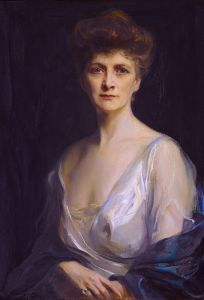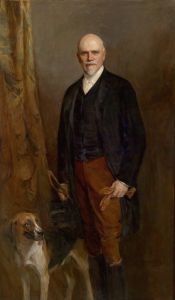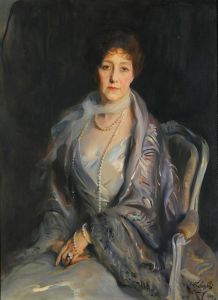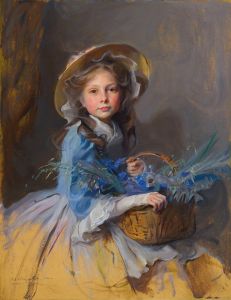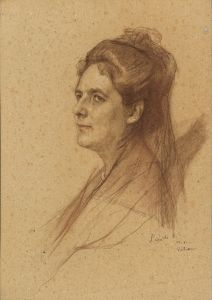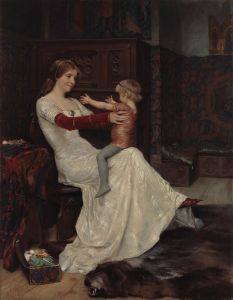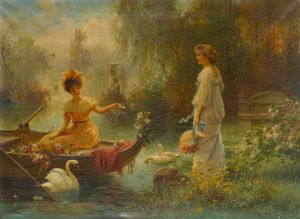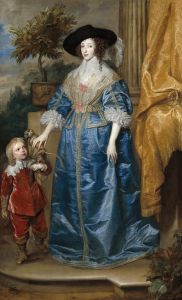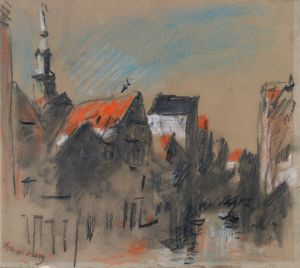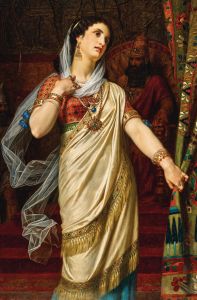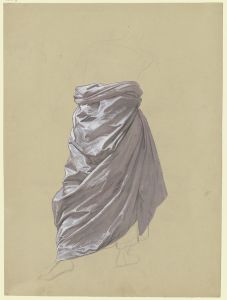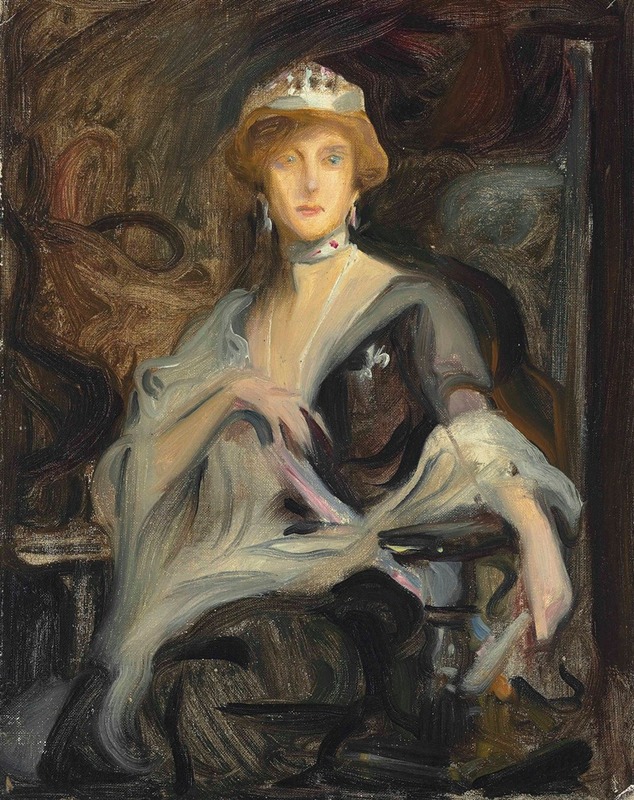
Auguste Victoria, Queen of Portugal, in exile, a study
A hand-painted replica of Philip Alexius de László’s masterpiece Auguste Victoria, Queen of Portugal, in exile, a study, meticulously crafted by professional artists to capture the true essence of the original. Each piece is created with museum-quality canvas and rare mineral pigments, carefully painted by experienced artists with delicate brushstrokes and rich, layered colors to perfectly recreate the texture of the original artwork. Unlike machine-printed reproductions, this hand-painted version brings the painting to life, infused with the artist’s emotions and skill in every stroke. Whether for personal collection or home decoration, it instantly elevates the artistic atmosphere of any space.
"Auguste Victoria, Queen of Portugal, in exile, a study" is a portrait by the renowned Anglo-Hungarian artist Philip Alexius de László. De László was celebrated for his ability to capture the likeness and character of his subjects, often members of European royalty and high society. This particular work features Auguste Victoria, the Queen of Portugal, during her period of exile.
Auguste Victoria was born on October 19, 1890, as Princess Auguste Viktoria of Hohenzollern. She was the daughter of William, Prince of Hohenzollern, and Princess Maria Teresa of Bourbon-Two Sicilies. Her marriage to Manuel II of Portugal, the last reigning king of Portugal, took place on September 4, 1913. Manuel II had been in exile since the Portuguese monarchy was abolished in 1910 following a revolution that established the Portuguese First Republic.
The portrait by de László captures Auguste Victoria during her time in exile, a period marked by significant personal and political challenges. The couple resided primarily in England, where they lived a relatively quiet life away from the political turmoil of their homeland. Despite the loss of their royal status, Auguste Victoria and Manuel II maintained connections with other European royal families and were involved in various cultural and charitable activities.
Philip de László, known for his elegant and insightful portraits, painted many members of European nobility and was particularly adept at portraying the dignity and grace of his subjects. His work is characterized by a keen attention to detail and a subtle use of color and light, which can be seen in his study of Auguste Victoria. The portrait likely reflects both the regal bearing and the personal resilience of the queen during her years in exile.
De László's portraits are often noted for their psychological depth, capturing not just the physical likeness but also the personality and mood of the sitter. In painting Auguste Victoria, he would have been aware of her unique position as a queen without a throne, a figure of both historical significance and personal tragedy. The portrait serves as a testament to her enduring dignity and the complexities of her life as a royal in exile.
The exact date of the painting is not specified, but it would have been created during the years following the couple's marriage and their life in exile. De László's work remains highly regarded for its artistic merit and historical significance, offering a window into the lives of Europe's aristocracy during a time of great change.
Overall, "Auguste Victoria, Queen of Portugal, in exile, a study" is a significant work that reflects both the skill of Philip Alexius de László as a portrait artist and the poignant story of a queen navigating life after the fall of her monarchy.





